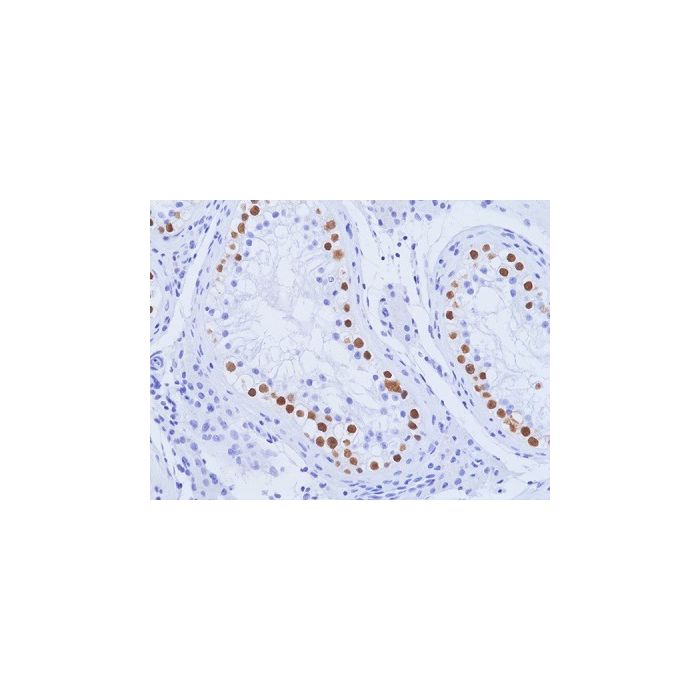Cookie Policy: This site uses cookies to improve your experience. You can find out more about our use of cookies in our Privacy Policy. By continuing to browse this site you agree to our use of cookies.
RevMab
anti-SALL4 (human), Rabbit Monoclonal (RM522)

| Product Details | |
|---|---|
| Synonyms | Sal-like Protein 4; Zinc Finger Protein 797; ZNF797 |
| Product Type | Recombinant Antibody |
| Properties | |
| Clone | RM522 |
| Isotype | Rabbit IgG |
| Source/Host | Rabbit |
| Immunogen/Antigen | A peptide corresponding to the C-terminus of human SALL4. |
| Application |
Immunohistochemistry (IHC): 1:100-1:500 |
| Crossreactivity |
Human Mouse Rat |
| Specificity |
This antibody reacts to human SALL4 (Sal-like protein 4) protein including SALL4A and SALL4B. This antibody may also react to mouse or rat SALL4 as predicted by immunogen homology. |
| Purity | Protein A purified. |
| Purity Detail | Protein A affinity purified from an animal origin-free culture supernatant. |
| Formulation | Liquid. 50% Glycerol/PBS with 1% BSA and 0.09% sodium azide. |
| Isotype Negative Control | |
| Other Product Data |
Click here for Original Manufacturer Product Datasheet Our product description may differ slightly from the original manufacturers product datasheet. |
| Accession Number | Q9UJQ4 |
| Declaration | Manufactured by RevMab Biosciences. |
| Shipping and Handling | |
| Shipping | BLUE ICE |
| Long Term Storage | -20°C |
| Handling Advice | Avoid freeze/thaw cycles. |
| Use/Stability | Stable for at least 1 year after receipt when stored at -20°C. |
| Documents | |
| Product Specification Sheet | |
| Datasheet |
 Download PDF Download PDF |
SALL4 (Sal-like protein 4) is a transcription factor that plays a crucial role in embryonic development, stem cell pluripotency, and cell differentiation. It is a member of the SALL gene family, characterized by zinc finger domains that enable DNA binding and gene regulation. In normal physiology, SALL4 helps maintain the self-renewal of embryonic stem cells. However, its abnormal reactivation in adult tissues has been linked to various cancers, where it contributes to tumor growth, metastasis, and resistance to therapy.





